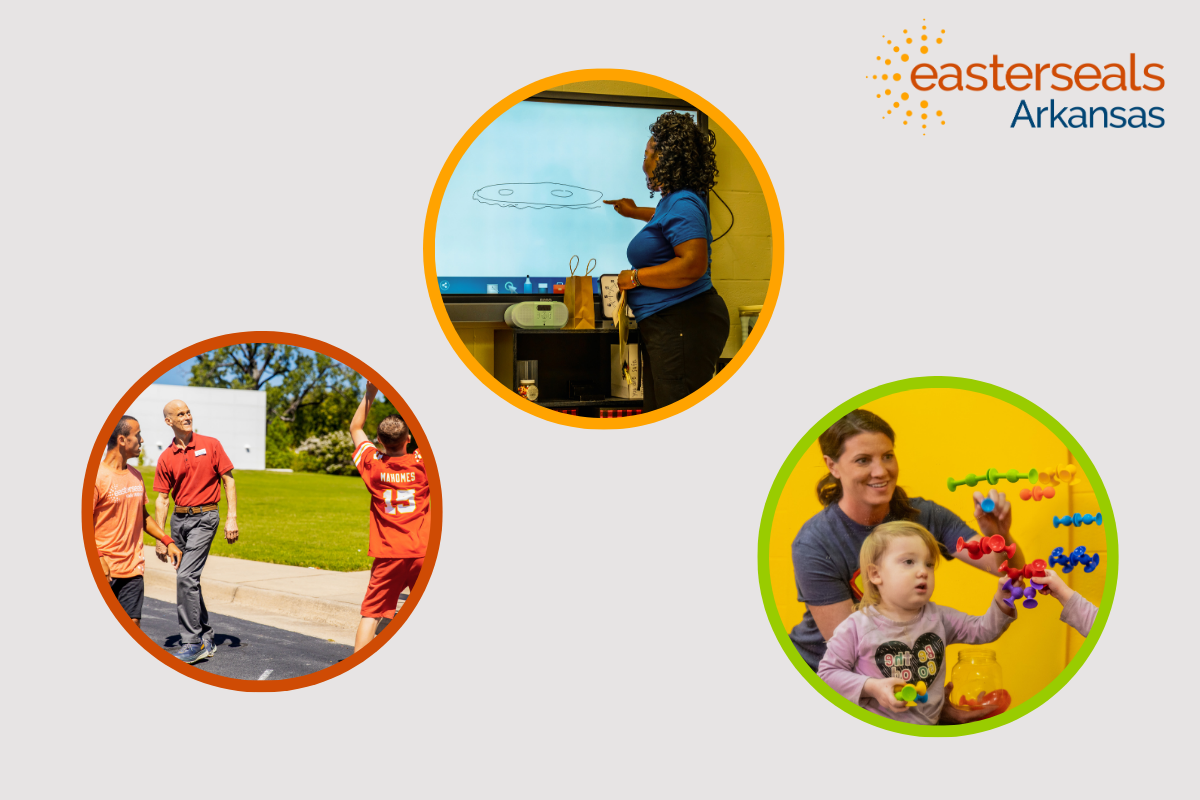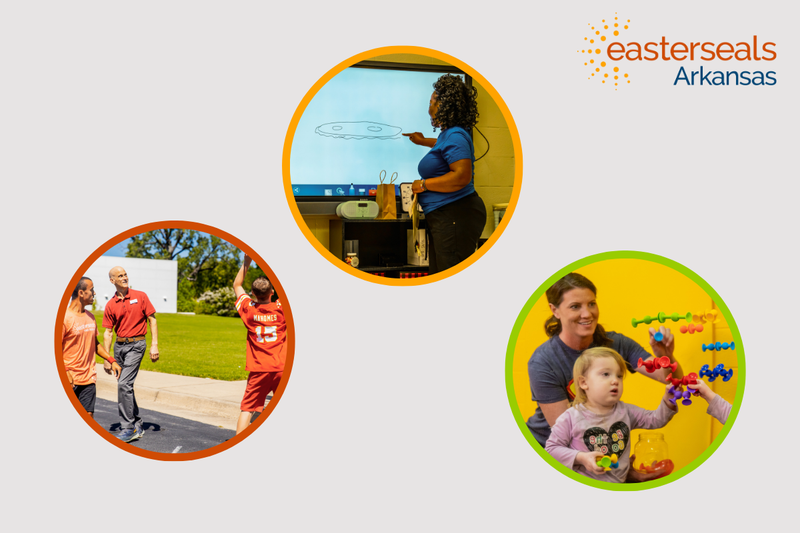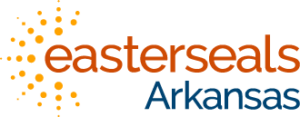
Down syndrome therapies are essential for fostering long-term development and growth in individuals with Down syndrome. But how much of a lasting impact do these therapies truly have? The effectiveness often hinges on the type of therapy provided and the consistency of its application. From physical and speech therapies to alternative approaches like sensory integration, each plays a vital role in supporting a child's unique needs. For caregivers and educators, understanding which Down syndrome therapies yield the best results can empower you to make informed choices and enhance outcomes for those in your care.
Key Takeaways:
- Effective Therapies: Three main therapies for Down syndrome are physical therapy, speech therapy, and occupational therapy.
- Physical Therapy: Enhances posture, strength, and motor skills.
- Speech Therapy: Improves communication skills and language development.
- Occupational Therapy: Builds skills for daily life activities like dressing and feeding.
- Early Intervention: Starting therapies early results in faster skill development and improved long-term outcomes.
- Alternative Therapies: Options like hippotherapy (horseback riding) and sensory integration may boost motor skills, though some, like homeopathy, lack scientific support.
- Emerging Therapies: Gene therapy and AAC devices (speech aids) show promise for future Down syndrome treatment.
- Behavioral Management: Applied Behavior Analysis (ABA) helps manage behaviors and attention issues.
- Life Impact: Consistent therapies improve independence, health, and quality of life, extending life expectancy.

The Most Effective Therapies for Down Syndrome
There isn’t just one type of therapy that works for everyone with Down syndrome because each person has different needs. However, three types of therapies for individuals with Down syndrome: physical therapy, speech therapy, and occupational therapy.
Physical Therapy: Improving Motor Skills
For children with Down syndrome, physical therapy is essential. It helps with developing good posture, balance, and strength. Since people with Down syndrome often have low muscle tone, physical therapy is usually one of the first therapies started in childhood.
Many therapists begin working on motor skills when a child is just an infant. Therapy might involve simple exercises, like stretching and moving the baby's legs. Later, kids might practice standing, crawling, or walking to help build strength over time.
Speech Therapy: Tackling Communication Challenges
Speech therapy is vital because children with Down syndrome often face challenges with communication. This type of therapy helps with language development, and the earlier it starts, the better the results.
Speech therapists work with kids to improve speaking and understanding. Some children with Down syndrome may understand more than they can express. Through therapy, they learn to form words more clearly and express needs better, either through speech or even sign language when words are harder to use.
Occupational Therapy: Building Daily Life Skills
Occupational therapy helps children gain everyday skills like feeding themselves, dressing, and becoming more independent. It's about learning actions that most people take for granted but that might be tricky for someone with Down syndrome.
For example, learning how to hold a spoon or brush their teeth can help kids become more independent. An occupational therapist will also teach them to button clothes and practice hand movements, which are key in becoming more self-sufficient.
Early Intervention and Down Syndrome Care
Early intervention is so important when it comes to Down syndrome. It might seem overwhelming at first, but beginning therapies early can make a huge impact on your child’s growth. In fact, research shows that children with Down syndrome who start receiving therapies early in life develop key skills faster than those who don’t.
There are many types of early intervention programs to explore. The most common ones include speech therapy, physical therapy, and occupational therapy. Speech therapy helps babies learn language and communication skills. Physical therapy improves strength and gross motor skills, like sitting, climbing, or walking. Occupational therapy focuses on fine motor skills and daily tasks, like holding toys or feeding themselves.
The earlier your child begins these interventions, the more effective they become for long-term growth. By targeting areas like muscle development and language early, you set up your child for a better future. Structured care helps children reach their potential more easily, allowing them to build independence and adapt better as they grow into adulthood. Without this early focus, gaps in development become harder to close later on.
Alternative Therapies for Managing Down Syndrome
There are several alternative Down syndrome therapies that people explore, though not all are scientifically proven. One popular yet controversial option is homeopathic treatments for Down syndrome. These treatments claim to use highly diluted natural substances to help the body heal itself. However, scientific research mostly concludes that homeopathy isn't effective in treating Down syndrome symptoms. While some families may try these methods hoping for improvement, it's clear that homeopathy remains unsupported by science.
Moving onto physical alternatives, one lesser-known therapy is hippotherapy, which involves horseback riding. The movement of the horse helps improve balance, muscle tone, and coordination. Studies show children with Down syndrome often gain motor skills and increased muscle strength through hippotherapy. It's a fun and engaging way for children to exercise.
Dance and sensory integration therapy are other alternatives that provide physical and mental benefits. Dance helps foster social interaction and improves body awareness. Sensory integration therapy uses sights, sounds, and objects to engage children and calm their senses. This therapy can help improve social skills too. Ultimately, alternative therapies add a layer of engagement, but it’s always important to consult health specialists before starting any plan.
Physical Rehabilitation
Physical rehabilitation offers many benefits for people with Down syndrome, starting with motor skill improvement. One major focus is enhancing muscle tone. Individuals with Down syndrome often have low muscle tone, which can make movement harder and reduce physical independence. By using Down syndrome rehabilitation techniques, therapists help strengthen muscles, which in turn improves posture and coordination. These improvements can make everyday tasks like walking, standing, or even using utensils easier.
Muscle Strength
One essential aspect of physical therapy involves exercises to help with motor skills development. These exercises often include balance games, training with large movements like crawling or reaching, and stretching routines. Strengthening specific muscle groups—like the core and leg muscles—gives individuals a solid foundation for better movement. Over time, greater stability allows for more independence and could even delay mobility challenges during aging.
Fine Motor Skills
Physical therapy isn’t just about big actions; it also targets fine motor skills. Therapists may use activities like gripping toys or buttoning clothes, which build finger and hand strength. These kinds of skills are important for self-care and daily tasks, like dressing or feeding. Long-term improvements in these areas can help individuals become more self-reliant.
The long-term impact depends on early and continuous care. To maximize the effects, starting physical therapy as soon as possible is key. Early intervention programs often aim to address delays in motor skill development from a young age. This early start optimizes progress and leads to better outcomes in the future. The help of resources, like the ECTA Center, can make all the difference when looking for support and guidance.
With consistent therapy, gains in muscle tone, movement, and independence can last throughout life. While physical therapy can't fix every challenge, it makes a remarkable difference in overall quality of life for individuals with Down syndrome.
Emerging Therapies for Down Syndrome
One area of advancement involves speech aids and Augmentative and Alternative Communication (AAC) devices. These tools really help improve communication for people with Down syndrome. From picture boards to digital devices, these options help individuals express themselves better. Using AAC devices early on can have a big impact on developing language skills.
Lastly, Applied Behavior Analysis (ABA) therapy is another area making strides. ABA helps with managing behavior while teaching critical social skills. This therapy is already well-established for autism, but more experts are now exploring its effects on individuals with Down syndrome. Early studies show that ABA can help manage challenging behaviors, such as stubbornness or attention difficulties, which often come with Down syndrome.
Behavioral Management Techniques
Managing behavior in children with Down syndrome can be complex. Common challenges include stubbornness and difficulty with attention, which can affect their learning and social skills. At Easterseals Arkansas, the team of therapists and educators work together to address behavioral challenges.
Caregivers play a huge role here too. Creating specific “rules” for tricky times, like during meals or bedtime, can be an immense help. Structure helps, and so does patience. Breaking up tasks into small, clear steps can make daily routines smoother. For stubbornness, consistent responses to behavior—both good and bad—teach the child more effectively than punishment alone.
Some challenges, like attention difficulties, need extra care. A child might lose focus quickly or get bored. Simple changes to a task, like adding a game element, can hold their interest longer. Try using short tasks mixed with physical play. This gives the child time to reset and pay better attention next time.
Effective behavior management depends on working as a team. When caregivers and therapists communicate, the path to successfully helping a child becomes clearer.
How to Know if Therapy is Needed
When you have a child with Down syndrome, it’s important to monitor their development closely. One of the early signs that may indicate therapy is needed includes missing or delayed developmental milestones. These milestones provide a clear guide for growth in areas such as sitting, walking, talking, and self-feeding. If these are not being met on time, it’s often a good idea to start or adjust therapies like physical or speech therapy. This can help them strengthen important skills like motor control and language.
Physical therapy is one of the first interventions. A therapist will evaluate your child’s muscle tone (which can be weaker in children with Down syndrome) and motor skills. They’ll pay attention to how your child holds their body, moves around, and engages with objects like toys. If your child struggles with these activities, physical therapy can be a huge help. It encourages better muscle tone and helps with balance and coordination long-term. As a parent, you’ll appreciate how better mobility can build their independence too.
Another big area of focus for kids with Down syndrome is communication. Early delays in speech and language skills can make it hard for your child to connect with others. Speech-language therapy is often suggested when a child isn’t babbling, making word sounds, or communicating wants and needs by certain ages. Communication boosts confidence, and that’s why it’s so important to start early!
The Impact of Down Syndrome Therapies
Therapies play a key role in improving both life expectancy and quality of life for individuals with Down syndrome. Today, therapies along with medical care help address these challenges. For example, physical therapy improves muscle tone and motor skills, which can reduce common issues like joint problems or mobility limitations. These improvements support greater independence and physical health.
Therapies like speech-language therapy and occupational therapy are just as critical for everyday life. Speech therapy, for example, focuses on communication, which enhances the ability of individuals to express needs and feelings. Occupational therapy teaches daily living skills, like feeding or dressing, that improve self-sufficiency. Together, these interventions not only extend years but also add quality to those years.
An often overlooked but highly important area of therapy involves social skills. Cognitive and behavioral therapies create pathways for better social interactions and emotional control. These skills can reduce frustration and isolation, which are common among people with intellectual disabilities. More social connections can positively influence life satisfaction and mental well-being, helping the individual integrate and interact with the world around them.
Prevention Therapies
Prevention is another key factor. Regular therapy helps manage health complications before they become severe. This proactive approach reduces the likelihood of more serious health deteriorations and contributes to longer, healthier lives. With more individuals living well into their sixties, experts believe therapies are responsible for increasing both the quantity and quality of experience for those with Down syndrome.
To give your loved ones with Down syndrome the best care, understanding therapy options is key. Physical, speech, and occupational therapies help with motor skills, communication, and independence. Early intervention makes a huge difference, as does exploring alternative therapies like sensory integration or hippotherapy. With the right rehabilitation techniques and emerging advancements like gene therapy, they can achieve new milestones. Therapy isn’t just about development—it’s about improving quality of life, both now and in the future. Keep advocating, exploring, and supporting their unique journey.
Easterseals Arkansas
At Easterseals Arkansas, we empower individuals with Down syndrome and other disabilities to reach their full potential through innovative therapies, personalized support, and life-changing resources. Whether you're seeking expert therapies, educational opportunities, or a supportive community, we're here to guide you every step of the way.
Take the first step today. Explore our programs and discover how we can help you and your loved ones thrive.
